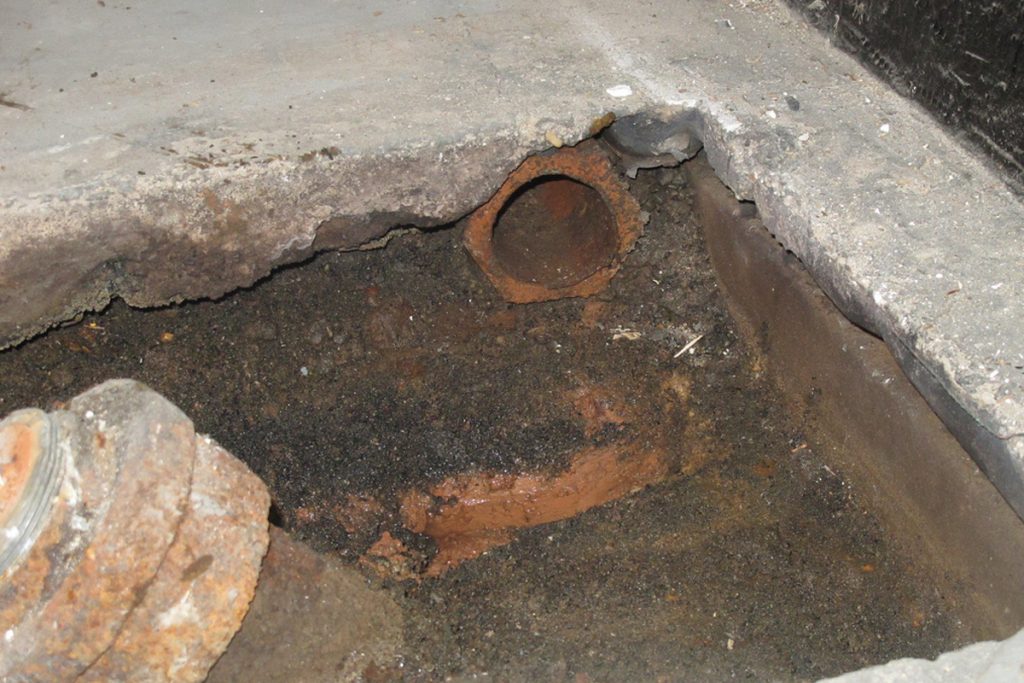Excavating foundation walls, waterproofing them and installing new weeping tile has been the standard approach to basement waterproofing for many years and continues to be so today. The prevalence of this waterproofing method is largely responsible for the popularly held belief that replacing weeping tile is necessary in order to eliminate and/or prevent basement leaks. In this post we examine the value of weeping tile replacement for the purpose of preventing basement leaks.
Why weeping tile is installed
Weeping tile is fundamentally a drainage system installed around the perimeter of a home, along the footing at the very base of the foundation walls. Weeping tile is installed in order to provide drainage around the footing, thus preventing excessive water accumulation next to the foundation. It is important to note that weeping tile is, by building code, encapsulated in gravel in order to improve the drainage efficiency of the weeping tile system. Water that enters into the weeping tile drains either to the storm sewers beneath the street or into a sump pump located inside the basement.
Conditions causing a leaking basement
If weeping tile is functioning properly, why would a basement be leaking? This is a logical question asked by many people; in answering this question we will also shed light on the value of replacing weeping tile to eliminate and prevent basement leaks.
Typical basement leaks occur because ground water, with its associated hydrostatic pressure, is able to penetrate foundation walls. In general, ground water enters a basement via foundation cracks and other openings in the foundation walls. There are actually quite a few ways in which water penetrates foundation walls; to learn more, follow this hyperlink for typical sources of basement leaks.
Why perfectly functioning weeping tile doesn’t prevent a basement from leaking
For most full height basements (7’ – 8’), the footing and the weeping tile can be found 6.5’ below grade. 6.5’ is quite deep and in combination with clay soil it can take a long time for rain water to drain through the soil and make its way down to the weeping tile. Furthermore, clay soils retain (absorb) substantial amounts of water.
Wet clay soils resting against foundation walls exert considerable hydrostatic pressure against the walls. When this hydrostatic pressure is applied against a cracked foundation, or other vulnerabilities in the foundation, water penetrates the walls, resulting in a wet basement.
For the sake of clarity, ground water puts pressure on the foundation before it drains down to the level of the weeping tile; therefore, basements will often leak before the weeping tile has an opportunity to drain the water away. Under these conditions, weeping tile replacement accomplishes nothing with respect to preventing basement leaks.
Concerning clogged weeping tile
A common argument supporting the replacement of weeping tile is that it is clogged and therefore does not provide adequate drainage. While it is true that weeping tile can become clogged over time, this situation does not necessarily mean that weeping tile replacement is necessary.
As mentioned above, weeping tile is encapsulated in gravel. This gravel layer is a building code requirement and it has the role of providing a secondary drainage path for water in the event that the weeping tile does become clogged.
After having excavated numerous foundations we have found fewer clogged weeping tile systems than one would expect. In fact, what he have observed, particularly with concrete block / cinder block foundations, is that there are cracks in the walls and that is the main reason why people’s basements are leaking.
If weeping tile replacement doesn’t guarantee a dry basement, what does?
When a wet basement is attributable to leaks through foundation walls the only effective way to prevent leaks is waterproofing the basement walls.
Waterproofing the foundation does not necessarily mean that excavation is compulsory; in fact, there are a number of basement waterproofing options available. For more information on the available waterproofing methods follow this hyperlink to a tabular listing of waterproofing methods by foundation type.
